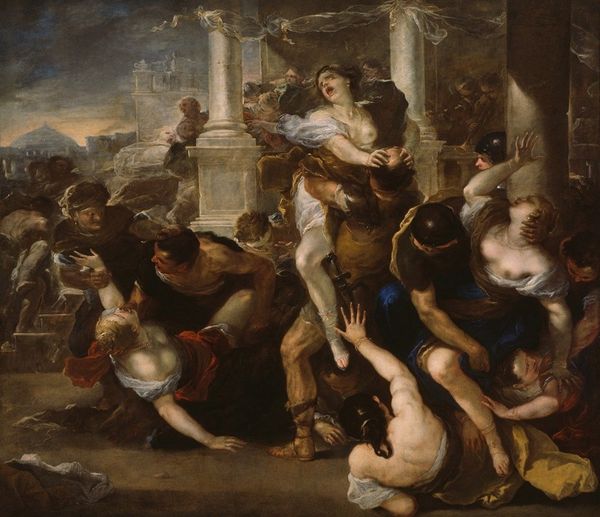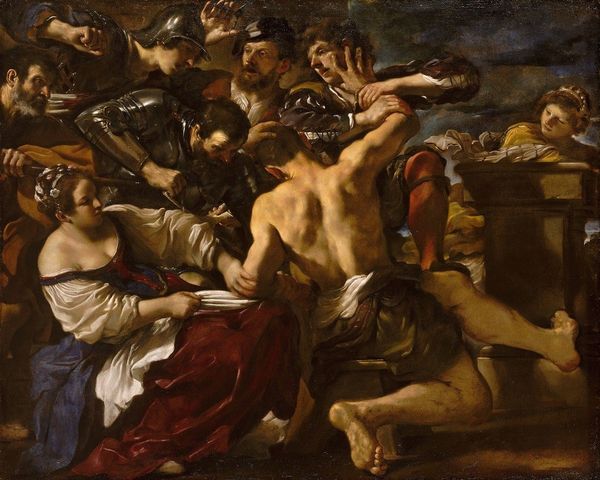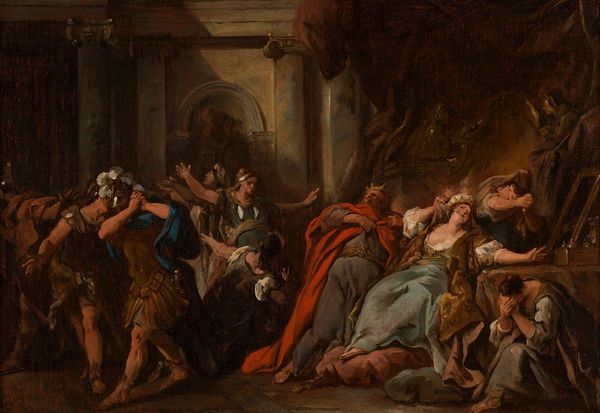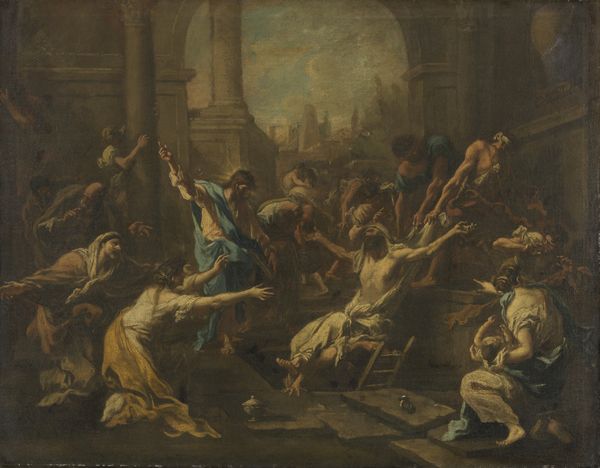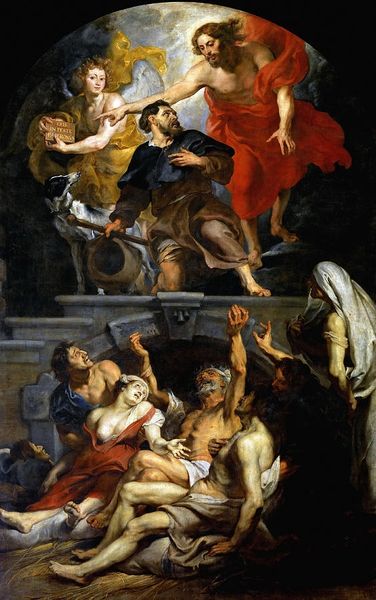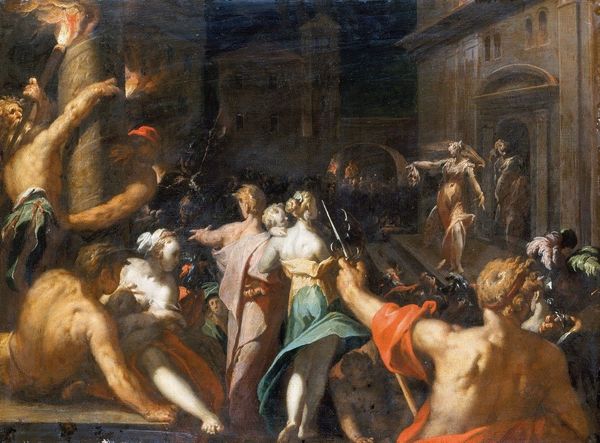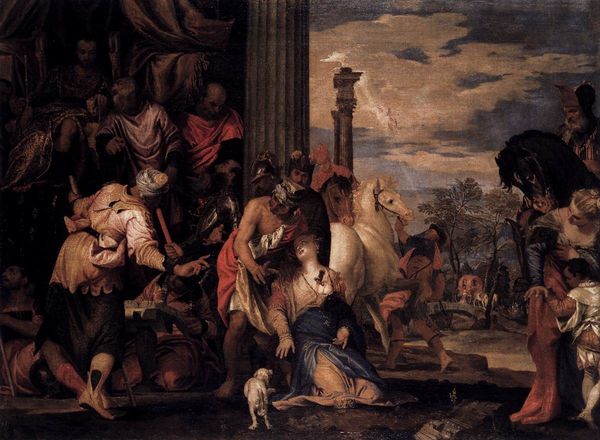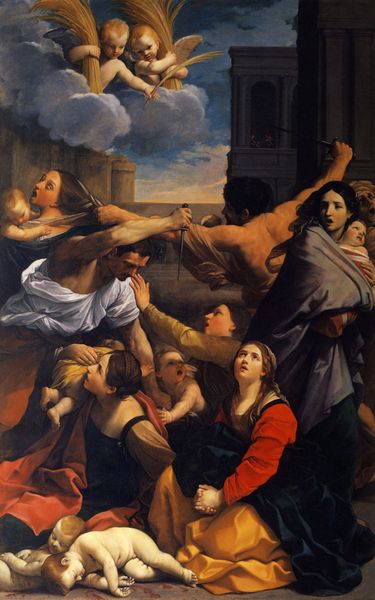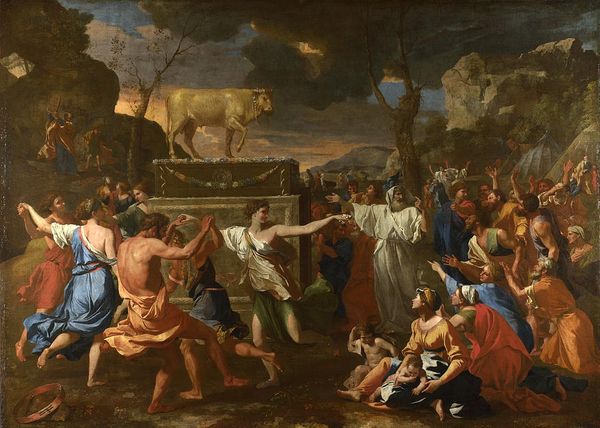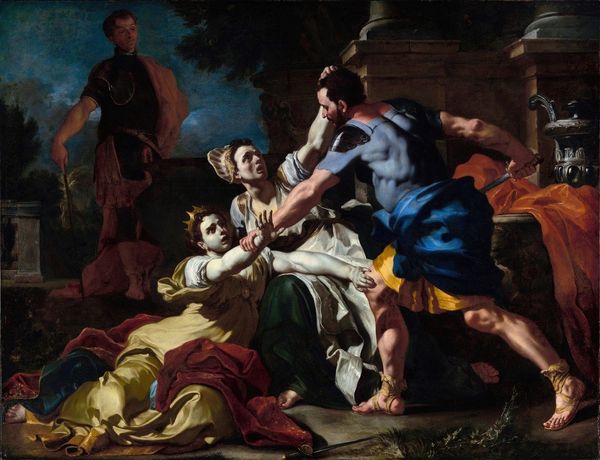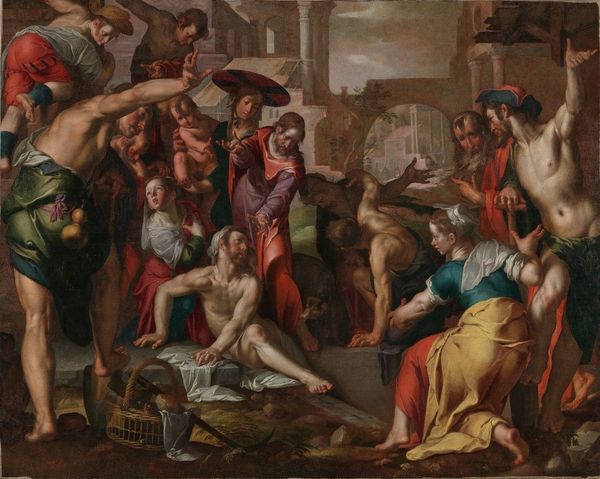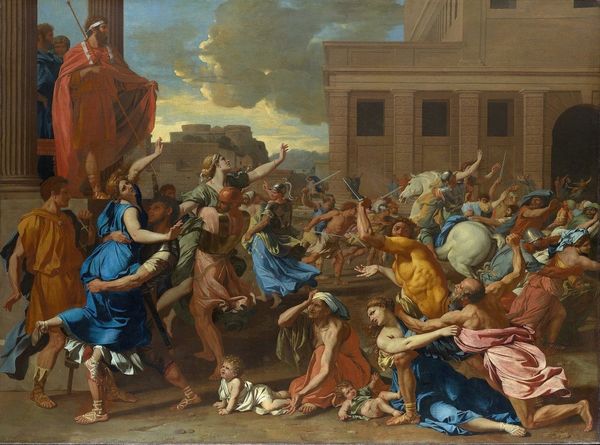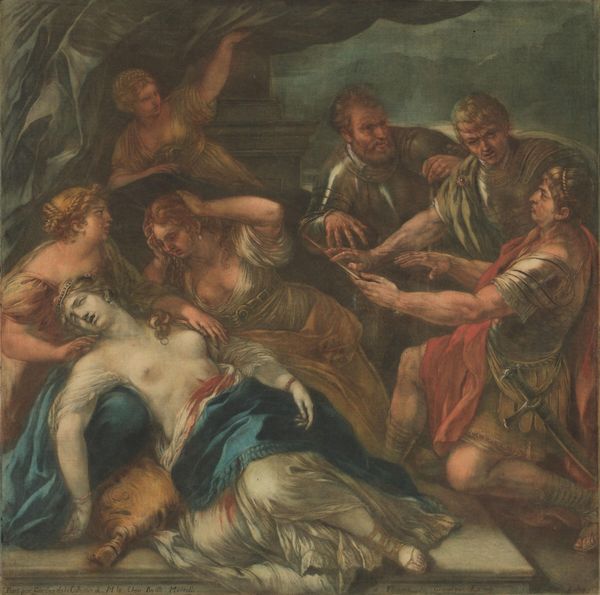
painting, oil-paint
#
allegory
#
narrative-art
#
baroque
#
painting
#
oil-paint
#
landscape
#
figuration
#
oil painting
#
acrylic on canvas
#
history-painting
#
academic-art
Copyright: Public Domain: Artvee
Editor: Here we have Nicolas Poussin's "The Massacre of the Innocents," painted sometime between 1626 and 1627 using oil on canvas. It’s… intense. All the figures are caught in such violent, dramatic poses. How do you interpret this work? Curator: The intensity you perceive is certainly deliberate. Poussin doesn’t just depict a historical event; he explores power dynamics, specifically the abuse of patriarchal power. Notice the stark contrast between the muscular, almost hyper-masculine soldiers and the vulnerable, frantic mothers. It speaks to the systemic violence against women and children within patriarchal structures. Where do you see those power structures reflected, visually? Editor: I see it in the soldiers' stances, their dominance over the women, who seem to be collapsing in grief and terror. But also, the architecture is so cold and imposing. Does that contribute? Curator: Absolutely. The classical architecture frames the scene, lending it a sense of historical weight and inevitability, as if these power structures are ancient and unshakeable. And that links directly to contemporary power dynamics. We still see the legacy of patriarchal violence playing out today, don't we? How does understanding the historical context of the story affect your viewing of it? Editor: Knowing it is a biblical scene highlights the political manipulation involved. The fearmongering of a king using violence to hold on to power resonates with…well, many events throughout history and today, really. Curator: Precisely! Poussin isn't simply illustrating a Bible story. He is dissecting how fear and power intertwine, revealing how readily vulnerable populations become targets when authority is threatened. Hopefully, recognizing these patterns can prompt action. Editor: So, seeing art as a reflection of ongoing societal problems gives it urgency and meaning. I’ll never look at another history painting quite the same way! Curator: I hope not. Analyzing those historical precedents allows us to interrogate present realities and maybe even pave the way for social justice.
Comments
No comments
Be the first to comment and join the conversation on the ultimate creative platform.
